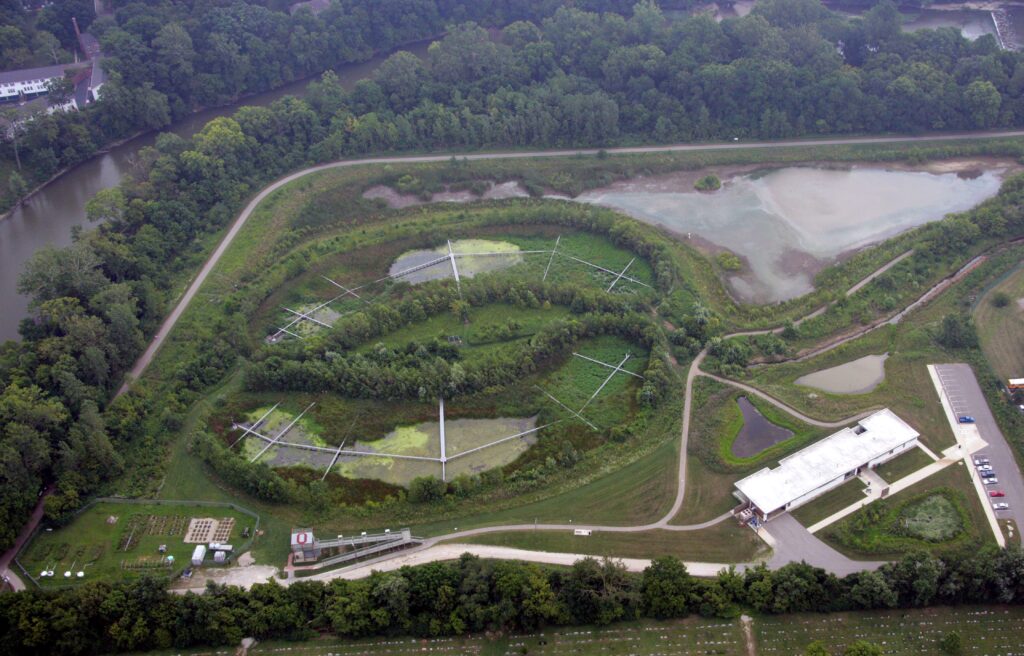Constructed wetlands are usually planted and/or seeded with plant species native to that area. However, as with any disturbed area, invasive, non-native species may appear and begin to dominate the plant community. A recent study examined a wide variety of factors that could explain when three common “invaders” occur in constructed wetlands in the Piedmont and Coastal Plain regions of Virginia in the United States.1 The project involved identifying plants along transects in 23 different constructed wetlands at 18 sites, as well as collecting soil and plant cover data.
The three invasive species studied included Arthraxon hispidus (joint-head grass), Microstegium vimineum (Japanese stiltgrass), and Typha spp. (cattail), all known to occur at mitigation sites. All were found to comprise approximately 20% of the plant cover, with the Anthraxon and Microstegium areas having less than 10% of any other species and the Typha areas having Persicaria hydropiperoides (11.6%) and Juncus effusus (10.8%) as co-dominants. Overall, 194 species were identified over the 23 sites. The more light available, the greater the presence of the three species, with some evidence that higher nutrient availability also encourages their growth. Site hydrology also influenced the abundance of each species based on plant preferences: Arthtraxon and Microstegium on drier locations and Typha on wetter locations. From this study, the authors suggested that reducing these invasive plants on constructed wetland sites may be achieved by planting larger woody species at higher densities, seeding fast-growing annual and perennial species and managing the hydrology early on. In addition, introducing stressors could provide advantages to the native species. An example was mixing in high carbon-to-nitrogen material to reduce nutrient availability.
While the previous study involved surveying many sites, an alternative approach is to monitor constructed wetlands over time to understand their dynamics and changing functions. Mitsch et al. (2023) reviewed the results of monitoring paired constructed wetlands in Ohio (cover photo) for almost 20 years and an urban water treatment constructed wetland system in Florida.2 The Ohio site involved primarily two kidney-shaped constructed wetlands (Figure 1) into which water from the adjacent river was pumped at a rate proportional to river flow. One was planted with 2,400 propagules of 13 species and the other was left to natural plant establishment. After five years, the number of species were about the same at around 90 species and after 17 years, four of the 13 planted species had disappeared. Both had converged to Typha-dominated wetlands, but this occurred later in the planted constructed wetland. Phosphorous and nitrogen were reduced by 20% to 60% as water passed through the constructed wetland, with little difference between the two. There were trends of reduced phosphorous retention over time. Carbon sequestration had two phases, with an early rapid phase followed by a decade of little accumulation and then another rapid phase at the end of monitoring. Over time, this experimental constructed wetland area became a park with bike trails and several buildings were added to house researchers. At the Florida site, stormwater runoff from 3,100 ha (7,660 acres) of residential, industrial, commercial and recreational areas is pumped into a 4.6 ha (11.4 acre) constructed wetland at an average weekly rate of 50 cm (19.7 inches) per week, but with little flow during the five to six month dry season. The constructed wetland is comprised of a 1.9 ha (4.7 acre) settling pond followed by three wetlands, each having a deep cell followed by two shallow cells. Overall, the constructed wetland retained 48% of the phosphorous and 26% of the nitrogen from the pumped inflow. Phytoplankton and submerged vegetation accounted for a little more than half of that retention, with the sedimentation basin slightly less. Emerged macrophytes were a very small part of the retention. Re-suspension was a major part of nutrient losses so it was suggested that reducing that would enhance nutrient retention.

References:
- Hunter, D.M., DeBerry, D.A. Environmental Drivers of Plant Invasion in Wetland Mitigation. Wetlands 43, 81 (2023).
https://doi-org.prox.lib.ncsu.edu/10.1007/s13157-023-01718-y. - Mitsch, W. J., L. Zhang, L. N. Griffiths, and J. Bays. 2023. Contrasting two urban wetland parks created for improving habitat and downstream water quality. Ecological Engineering 192 106976. https://doi.org/10.1016/j.ecoleng.2023.106976.
About the Expert:
Rich McLaughlin, Ph.D., received a B.S. in natural resource management at Virginia Tech and studied soils and soil chemistry at Purdue University for his master’s degree and doctoral degree. He has retired after 30 years as a professor and extension specialist in the Crop and Soil Sciences Department at North Carolina State University, specializing in erosion, sediment and turbidity control. He remains involved with the department as professor emeritus.













